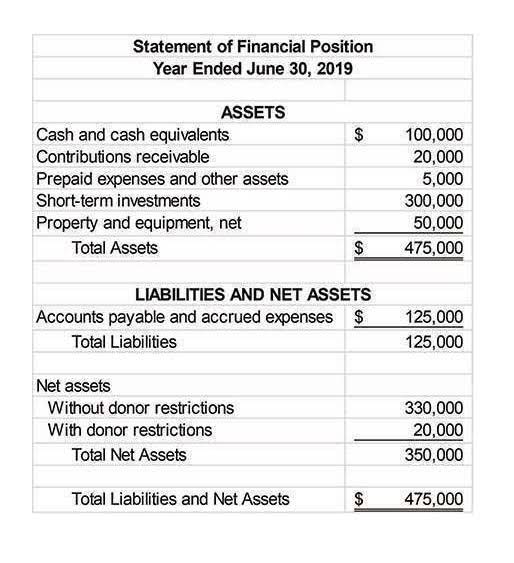What is A Bank Financial Statement? Explained
diciembre 14, 2020What Is Alcoholic Ketoacidosis? The Impact of a Buildup of Ketones in Your Blood
noviembre 23, 2021
These statements provide a comprehensive view of the bank’s financial position, performance, and cash flow, which are crucial for investors, analysts, and regulators alike. The purpose of this article is to help readers understand the importance of these statements and their significance in assessing the financial stability of banks. By the end of this article, readers will have a basic understanding of the components of bank financial statements, the methods used to analyze them, and the challenges involved in interpreting them. Operating Income represents what’s earned from regular business operations. In other words, it’s the profit before any non-operating income, non-operating expenses, interest, or taxes are subtracted from revenues. EBIT is a term commonly used in finance and stands for bookkeeping Earnings Before Interest and Taxes.
Faces of a Bank Statement
- Banks accept deposits from consumers and businesses and pay interest in return.
- The accords stipulate minimum capital requirements, leverage ratios, and liquidity requirements that banks must meet.
- Now, for the Return on Assets, here we’re actually going to be using Net Income, because we’re not subtracting anything out on the Assets side, or on the Liabilities and Equities side.
- Amount of interest income or expense, including any amortization and accretion (as applicable) of discounts and premiums, including consideration of the provisions for loan, lease, credit, and other related losses.
- It is not intended to provide specific financial, investment, tax, legal, accounting, or other advice and should not be acted or relied upon without the advice of a professional advisor.
The length of pre-course reading is advised to participants in advance and typically ranges from 2-3 hours. You will need to bring a laptop or tablet to the course in order to access the course materials, as these will only be available electronically. Our courses are designed to be both engaging and flexible, offering a mix of classroom and virtual options to accommodate different preferences. The courses range from 1 to 5 days in duration, providing an immersive learning experience that is both interactive and case study-based.
- In this article, we discussed the importance of bank financial statements, the components of these statements, the methods used to analyze them, and the challenges involved in interpreting them.
- The Income Statement is one of a company’s core financial statements that shows their profit and loss over a period of time.
- Total operating expenses are computed by summing all these figures ($74.1 billion + $29.5 billion + $24.4 billion + $7.6 billion) to arrive at $135.7 billion.
- These include the outright charging of fees for various items, such as the fees charged for servicing an account or the commissions earned from transactions.
- Creditors are more concerned with a company’s cash flow and if they are generating enough income to pay back their loans.
- I shouldn’t say all of them, but at least all the regulatory capital ratios and the ones where the Tangible Common Equity go up.
Structure of the Profit and Loss Statement
But this is just an additional way for you to get some more practice with these, and with working with the financial statements and the other schedules that you’ll typically see for a commercial bank. So it’s not exactly this order in real life, but this is roughly what you are doing, even if you look at certain smaller components of one of these steps earlier on. As you can see, this example income statement is a single-step statement because it only lists expenses in one main category.

Loans to Customers and Deposits from Customers

There are two main categories of accounts for accountants to use when preparing a profit and loss statement. Valuing these instruments requires considering various factors, including interest rates, credit spreads, conversion terms, and the probability of conversion or triggering contingent events. Common examples include options, futures, swaps, and credit default swaps (CDS). Derivatives can be challenging to comprehend due to their sophisticated pricing models, risk management implications, and the potential for significant leverage. There are situations where intuition must be exercised to determine the proper driver or assumption to use.
The P&L statement shows a company’s ability to generate sales, manage expenses, and create profits. It is prepared based on accounting principles that include bank income statement revenue recognition, matching, and accruals, which makes it different from the cash flow statement. By analyzing financial ratios, investors and analysts can gain insights into the bank’s financial health, profitability, and risks. In addition to financial ratios, it’s important to consider other factors when analyzing bank financial statements.

This is important for banks to know, https://www.bookstime.com/articles/wave-accounting as it can affect the company’s ability to pay back loans. Here’s an example of an income statement from a fictional company for the year that ended on September 28, 2019. Horizontal analysis makes financial data and reporting consistent per generally accepted accounting principles (GAAP).
Then you can move to the Cash Flow Statement and reflect all those Balance Sheet changes as well as the items that flow in from the Income Statement like net income for example. And then at the end, you tend to calculate regulatory capital and the key metrics and ratios. Now, I’m going to move fairly quickly so you’re not going to be able to grasp every last detail of what we do here, but it is a very, very good summary of the first four or five lessons in this module. We’re going to show you from the ground up how to link a commercial bank’s financial statements, starting with those key Balance Sheet assumptions.






